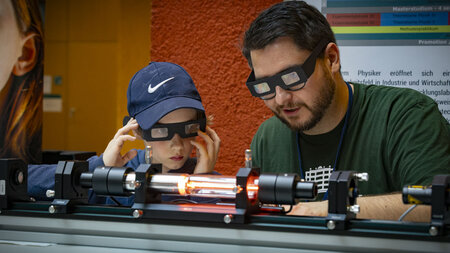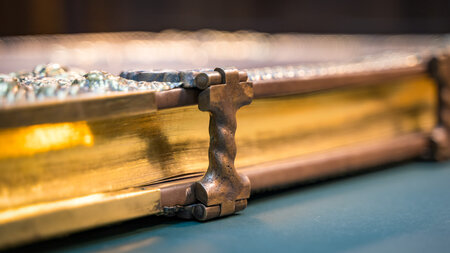Eintrag in der Universitätsbibliographie der TU Chemnitz
Volltext zugänglich unter
URN: urn:nbn:de:bsz:ch1-qucosa2-821430
Ganss, Fabian
Hellwig, Olav (Prof. Dr. ) ; Albrecht, Manfred (Prof. Dr.) (Gutachter)
Perpendicular Magnetic Anisotropy Thin Films and Nanostructures for Future Recording Media Applications
Kurzfassung in englisch
The increasing demand for nearline storage capacity in data centers calls for a continued enhancement in hard disk drive recording density far beyond one terabit per square inch. The thermal stability limit forces the drive manufacturers to develop new concepts in order to achieve this in the long term. Potential solutions are microwave-assisted magnetic recording (MAMR), heat-assisted magnetic recording (HAMR) and bit-patterned media (BPM).A simple example of BPM based on sputter-deposited Co/Pd multilayers and prepatterned substrates at hypothetical recording densities up to one terabit per square inch was studied by magnetic force microscopy (MFM). This system achieved promising results at lower densities, but an actual application for data storage, especially at one terabit per square inch and higher densities, requires elaborate optimizations.
For some time now, FePt thin films have attracted much attention as prospective recording layers for high-density magnetic data storage due to their high magnetic anisotropy. The use of FePt films in HAMR is especially promising. This application has been tested successfully by Seagate and its key customers in recent years and is about to be introduced into the nearline hard disk drive market. It requires a tuning of the magnetic properties of FePt, especially of its Curie temperature. The addition of Cu proved to be effective in this regard and can also facilitate the formation of the crucial L10 structure and (001) texture during rapid thermal annealing of sputter-deposited thin films.
Such films were prepared as bilayers of Cu and FePt on Si substrates, annealed for 30 s, and analyzed by X-ray diffraction (XRD) and SQUID vibrating sample magnetometry (SQUID-VSM). The influence of large Cu additions on important properties like lattice parameters, mosaicity, magnetic anisotropy and Curie temperature is discussed. The chemical long-range order was calculated from the XRD data, and a dedicated chapter of this thesis covers the most important factors to be considered in such calculations for textured thin films and other samples.
The feasibility of creating patterned Fe-Cu-Pt films with perpendicular magnetic anisotropy, as needed for a combination of HAMR and BPM, by deposition through a PMMA mask, a lift-off process and subsequent annealing was investigated as well. The results indicate that the chosen approach might not lead to the required (001) texture when the nanostructures are small enough to compete with today's recording densities, so that either a continuous film might need to be etched after annealing or a seed layer might be required to induce the texture.
| Universität: | Technische Universität Chemnitz | |
| Institut: | Professur Magnetische Funktionsmaterialien | |
| Fakultät: | Fakultät für Naturwissenschaften | |
| Dokumentart: | Dissertation | |
| Betreuer: | Hellwig, Olav (Prof. Dr.) | |
| URL/URN: | https://nbn-resolving.org/urn:nbn:de:bsz:ch1-qucosa2-821430 | |
| SWD-Schlagwörter: | Eisen , Platin , Kupfer , Cobalt , Palladium , Ferromagnetische Schicht , Mehrschichtsystem , Nanostruktur , Curie-Temperatur , Röntgenbeugung , Fernordnung | |
| Freie Schlagwörter (Englisch): | iron-platinum , copper , thin films , cobalt , palladium , multilayers , bit-patterned media , heat-assisted magnetic recording , Curie temperature , X-ray diffraction , long-range order | |
| DDC-Sachgruppe: | 548.85, 530.4175, 538.44, 548.83 | |
| Sprache: | englisch | |
| Tag der mündlichen Prüfung | 10.12.2021 |




